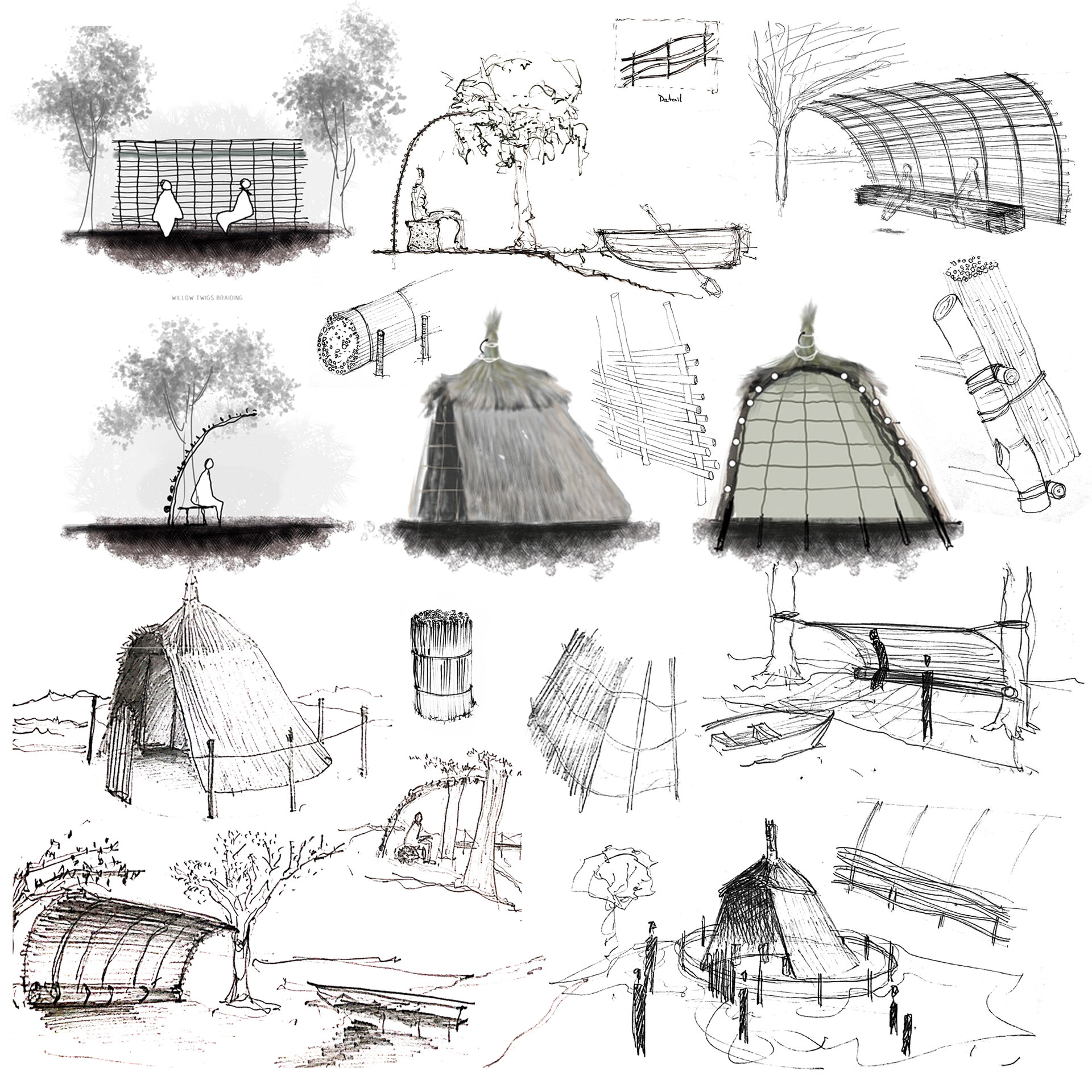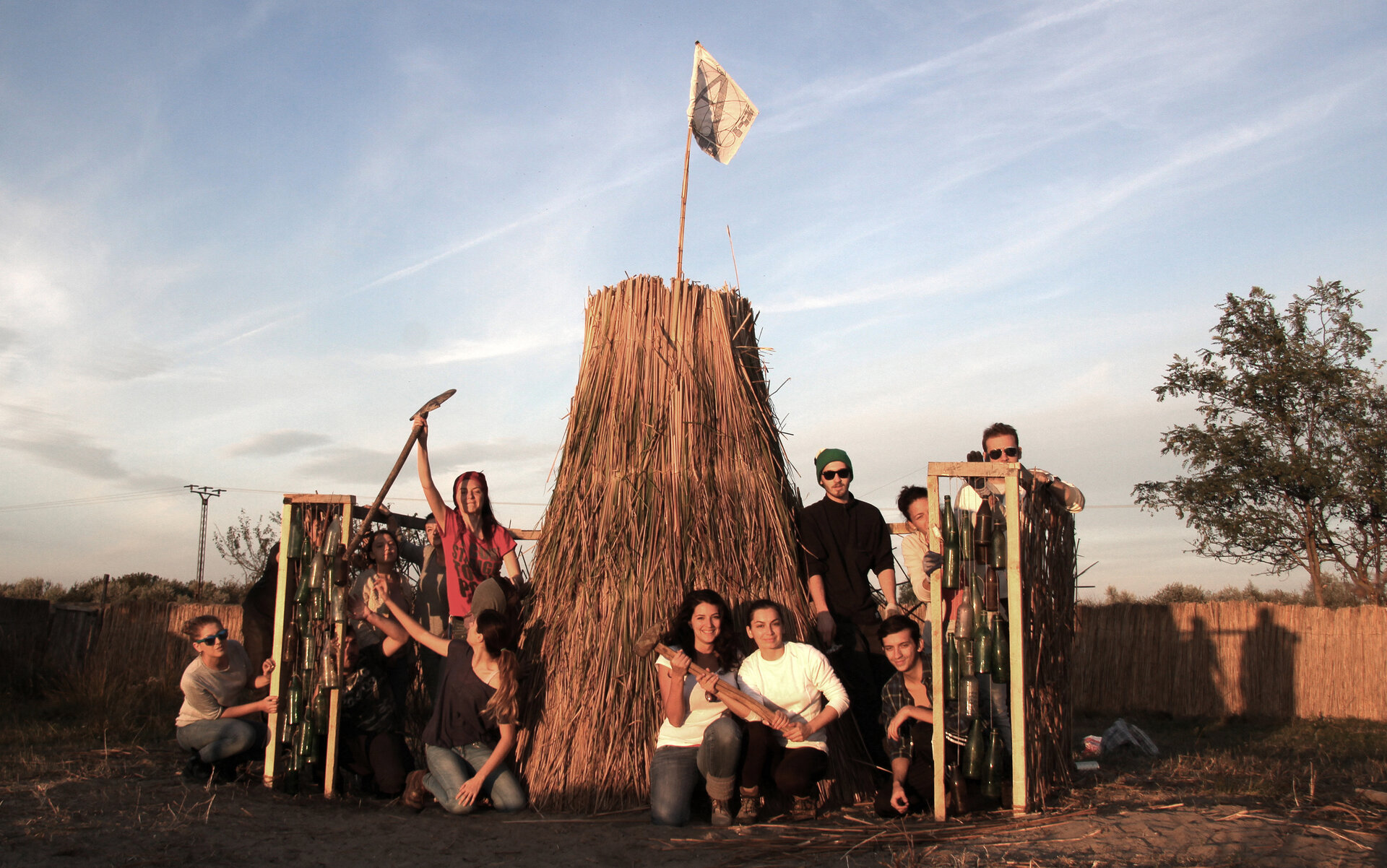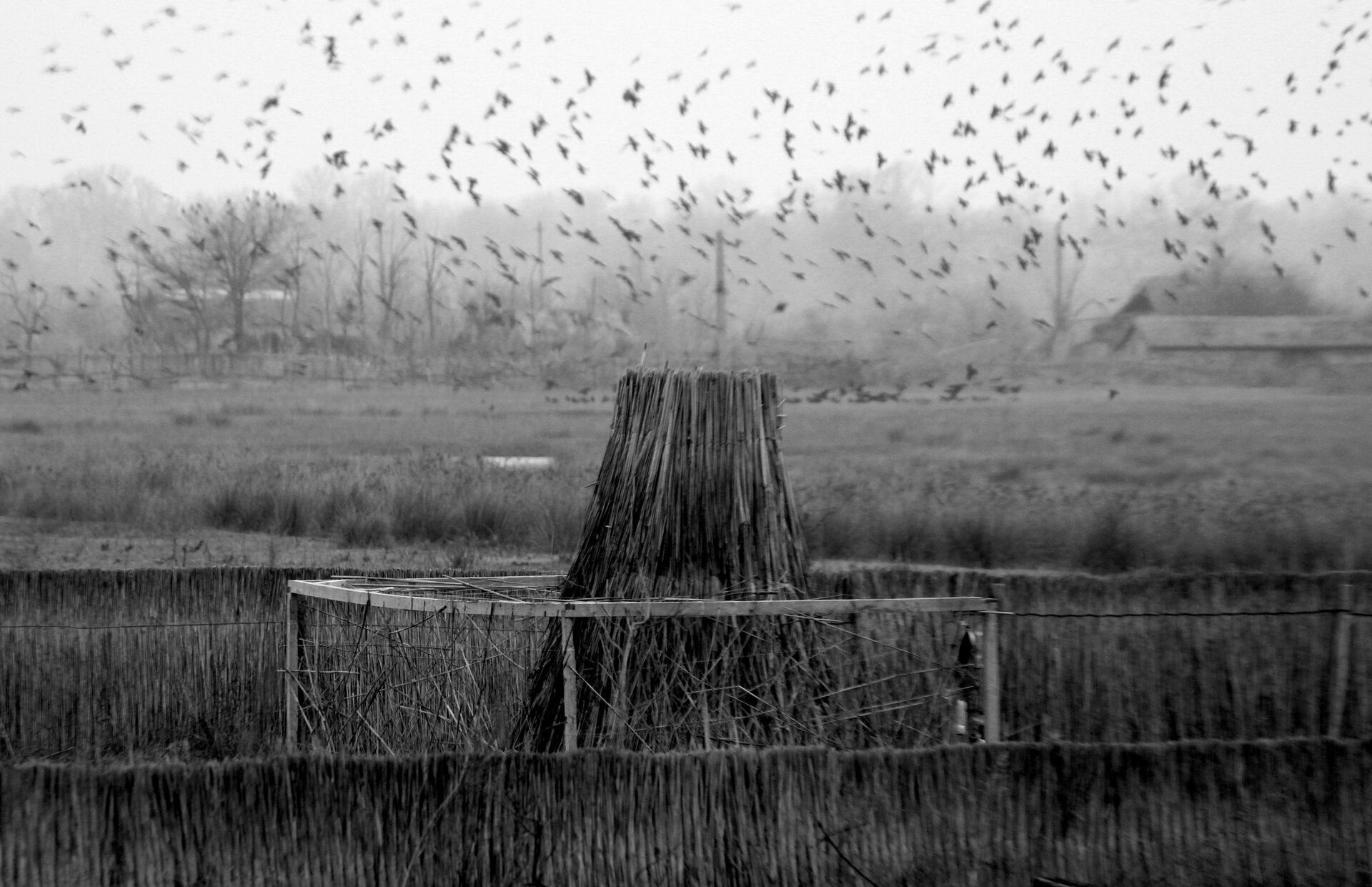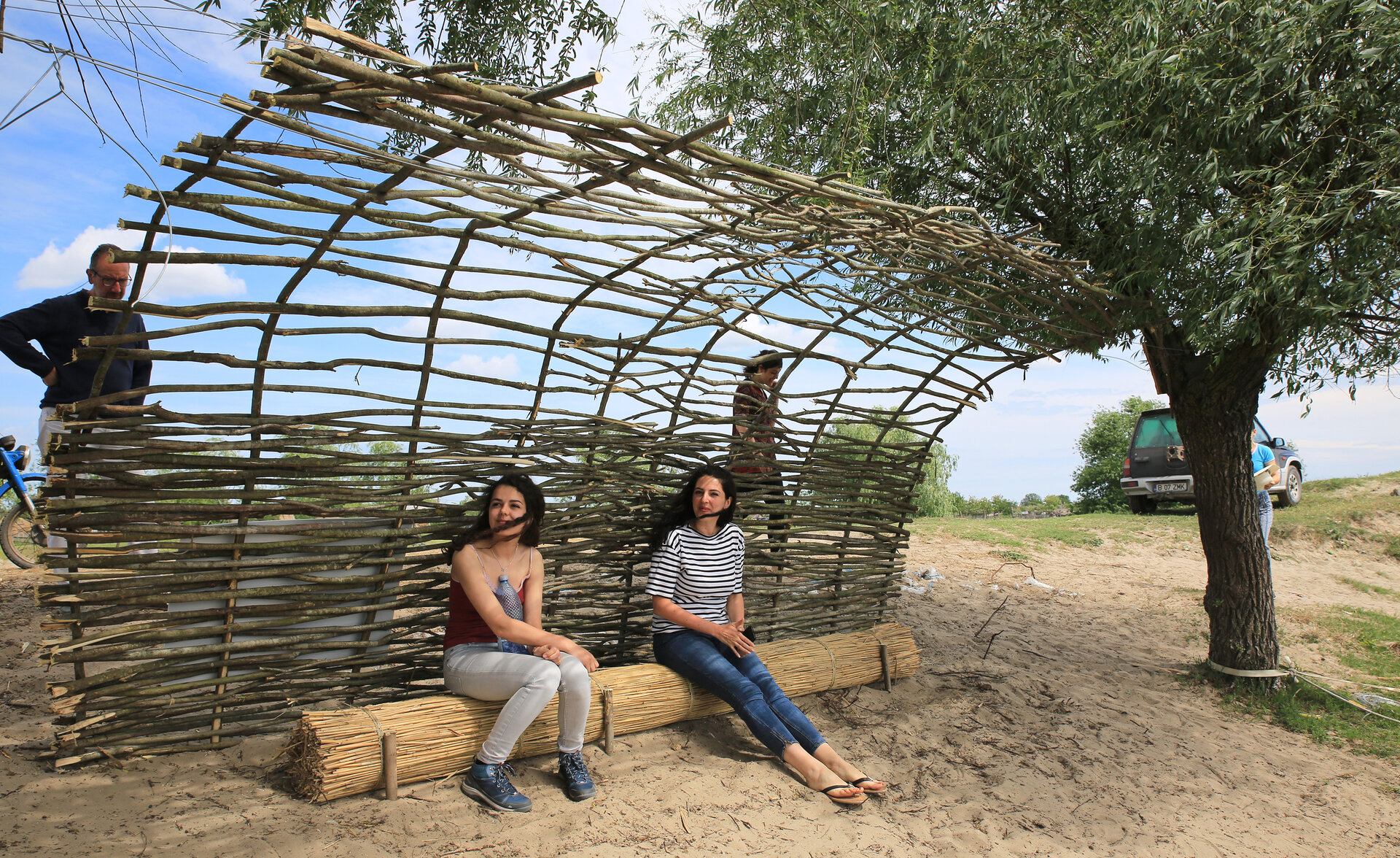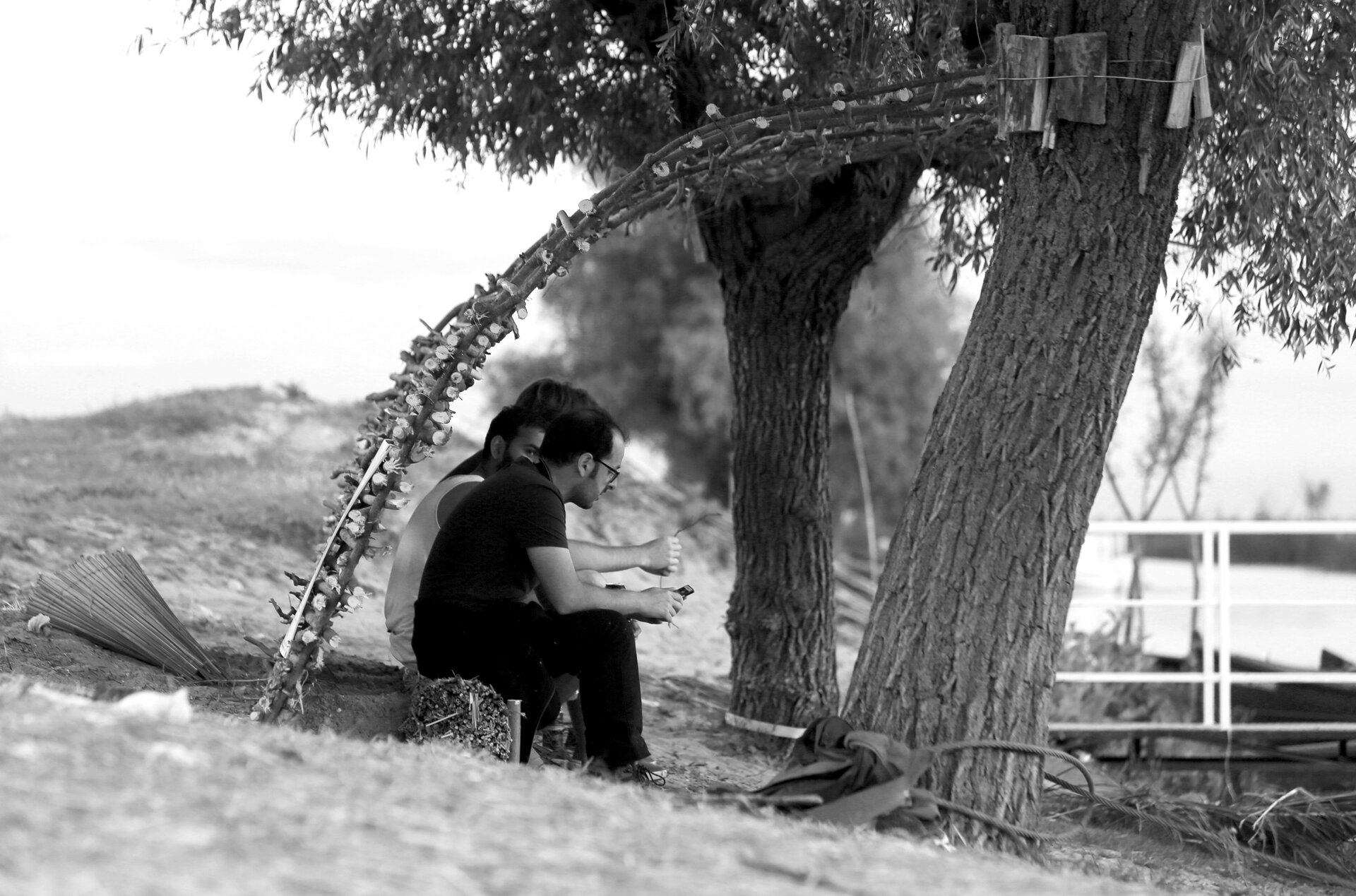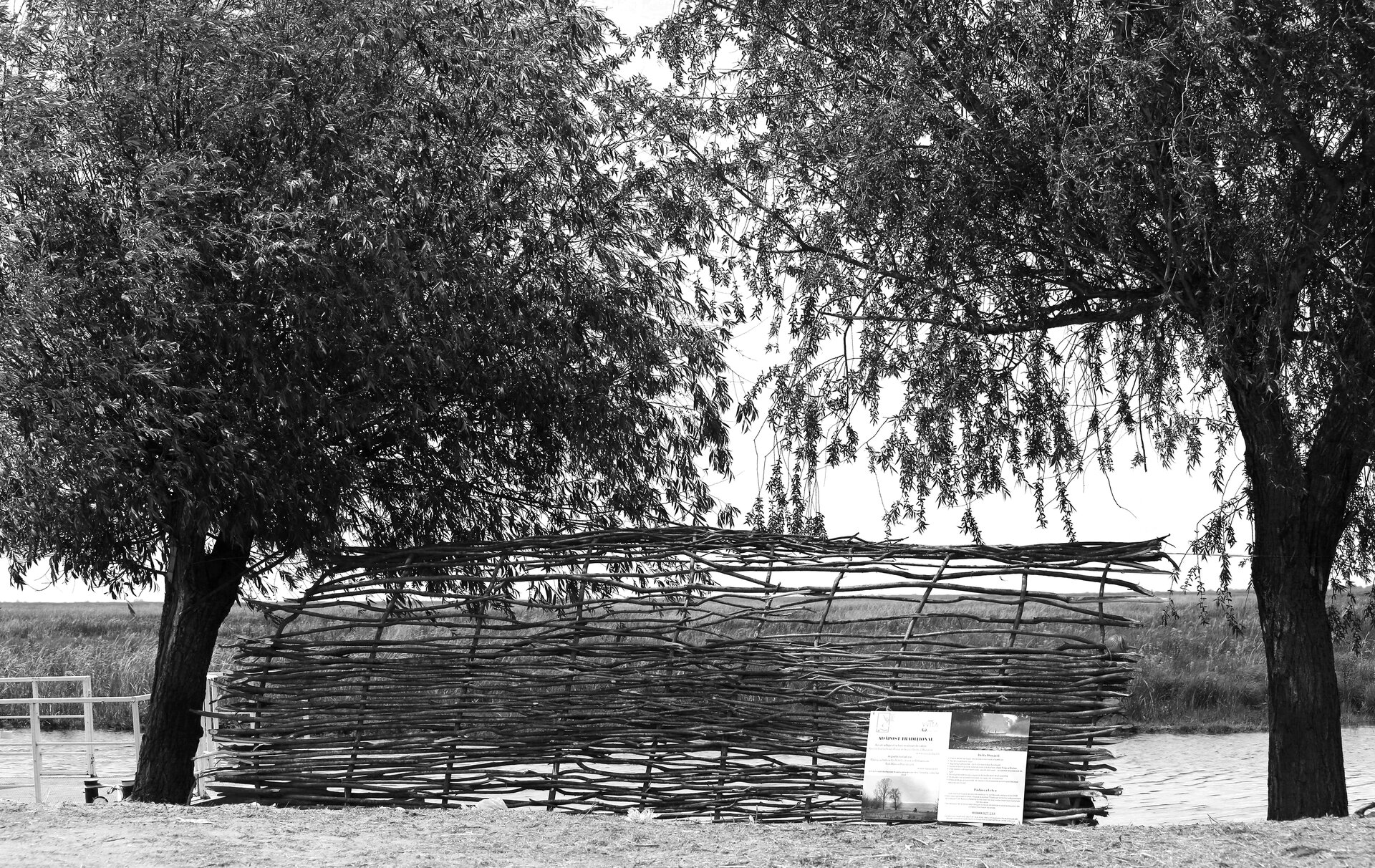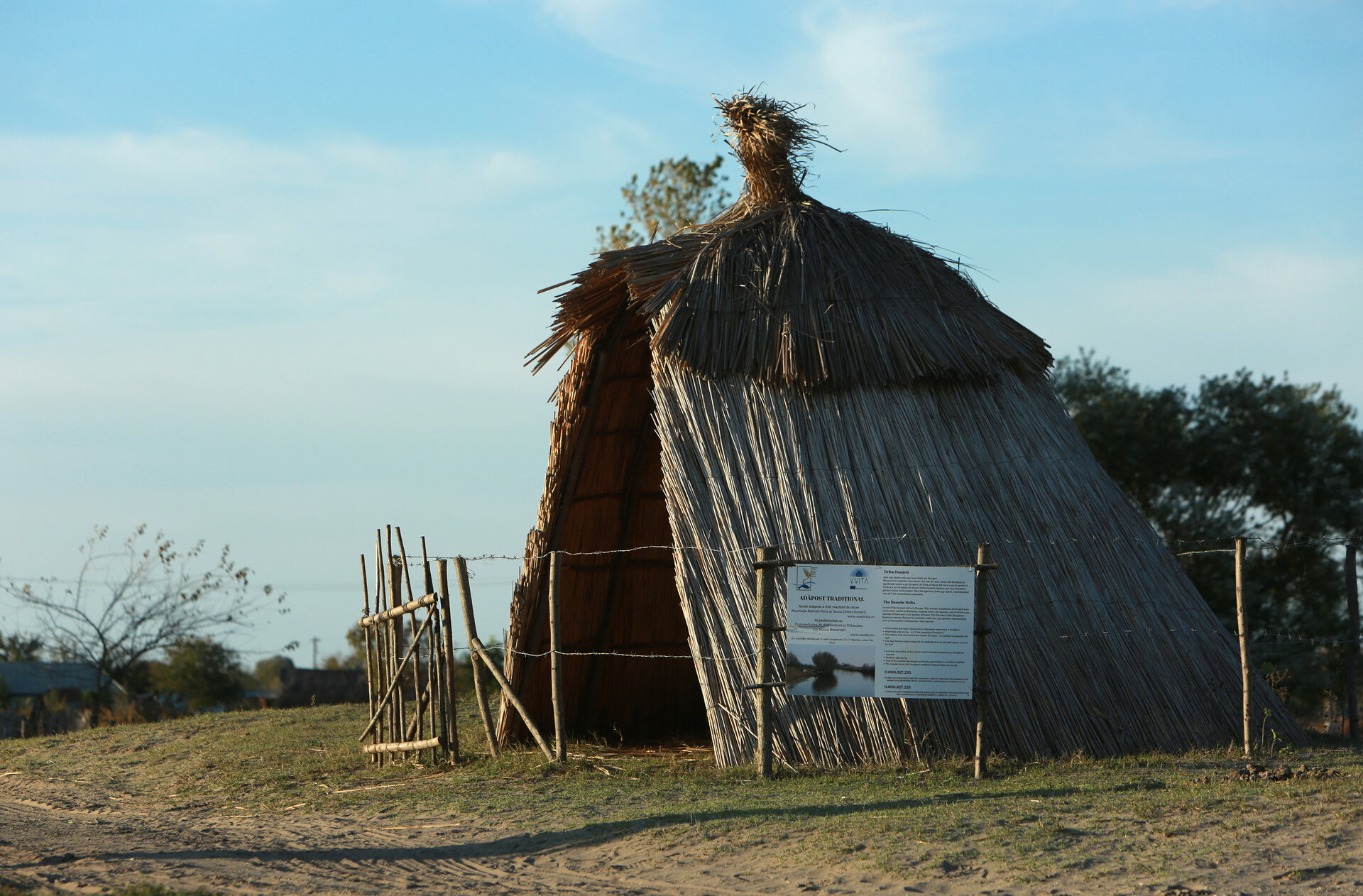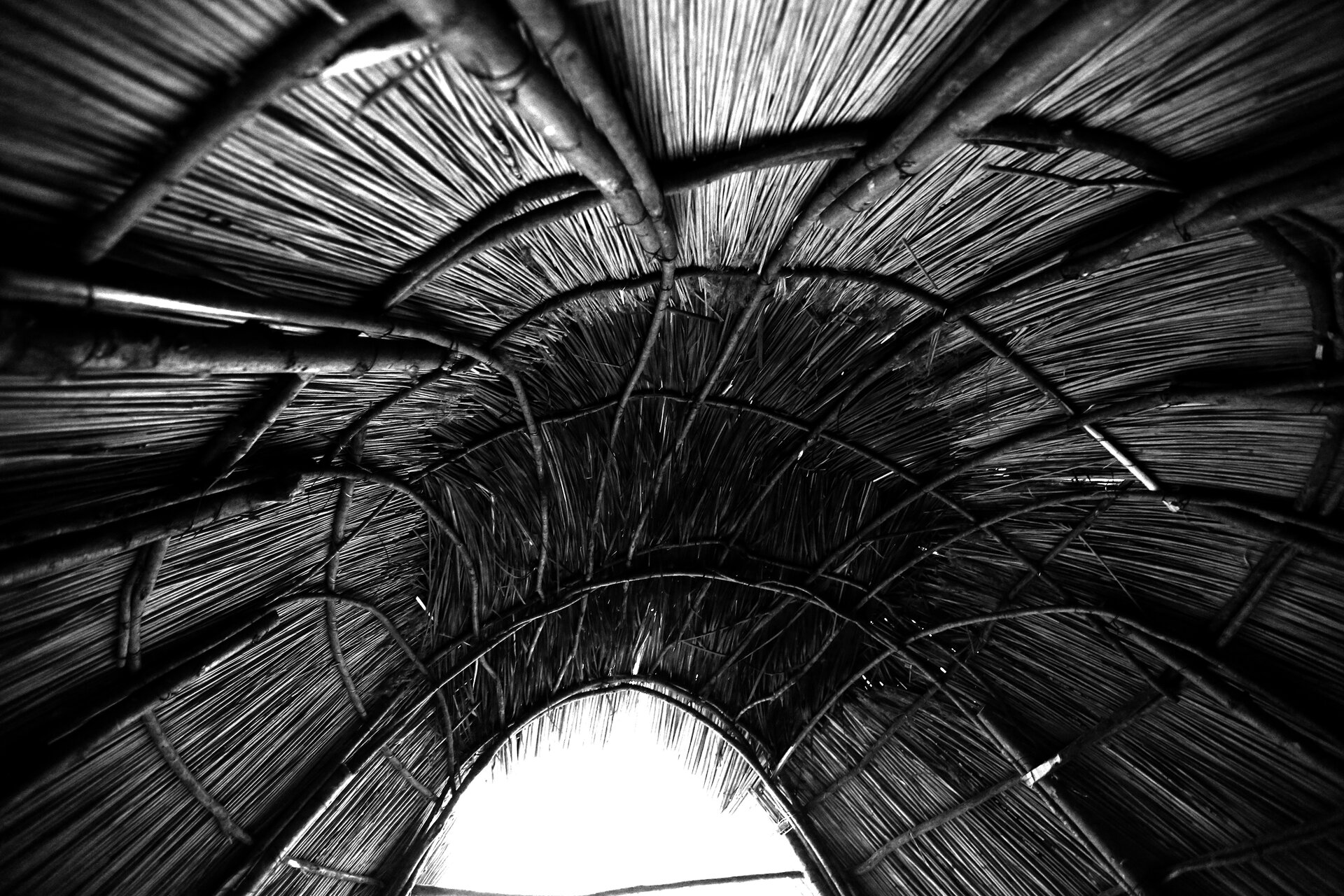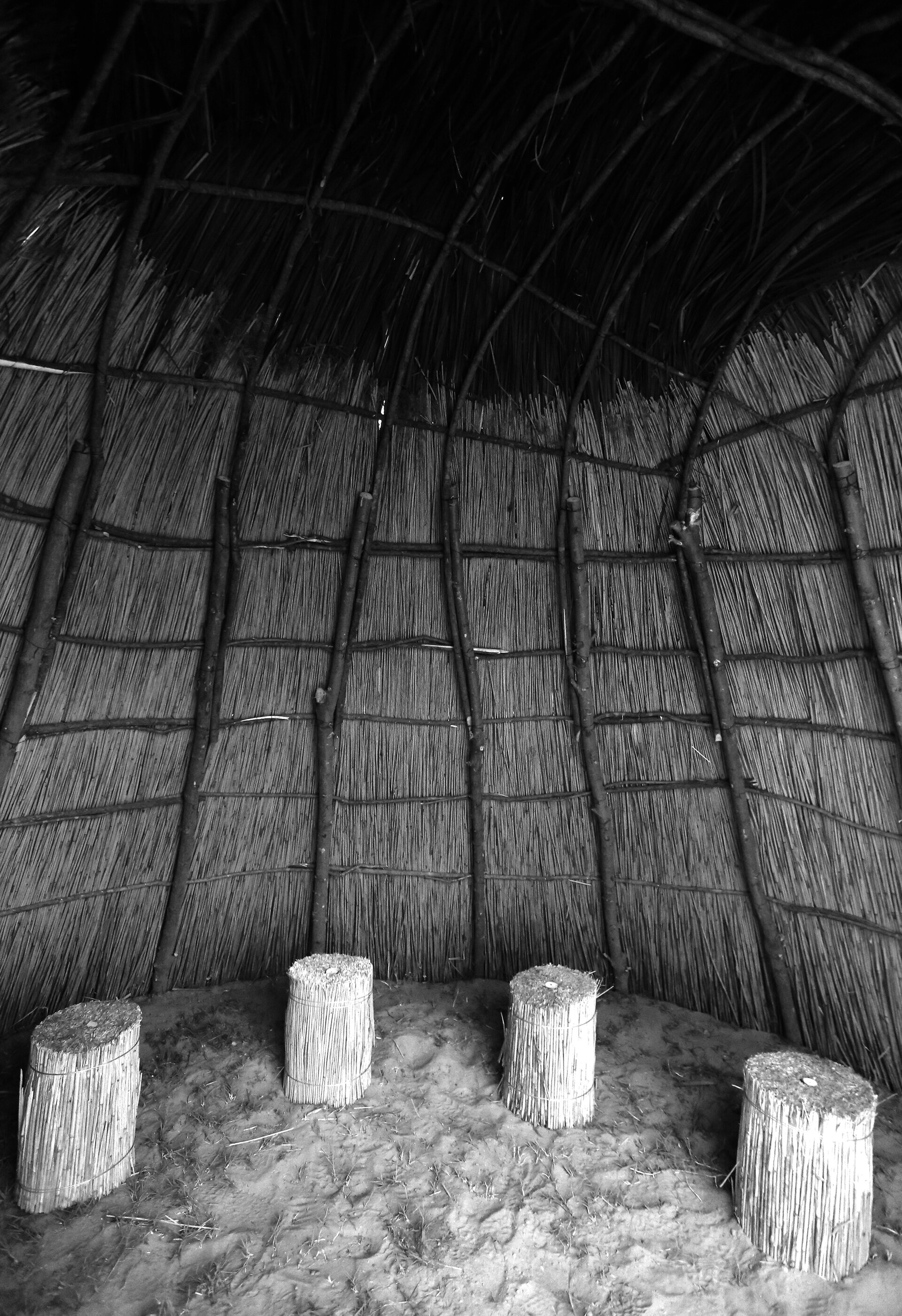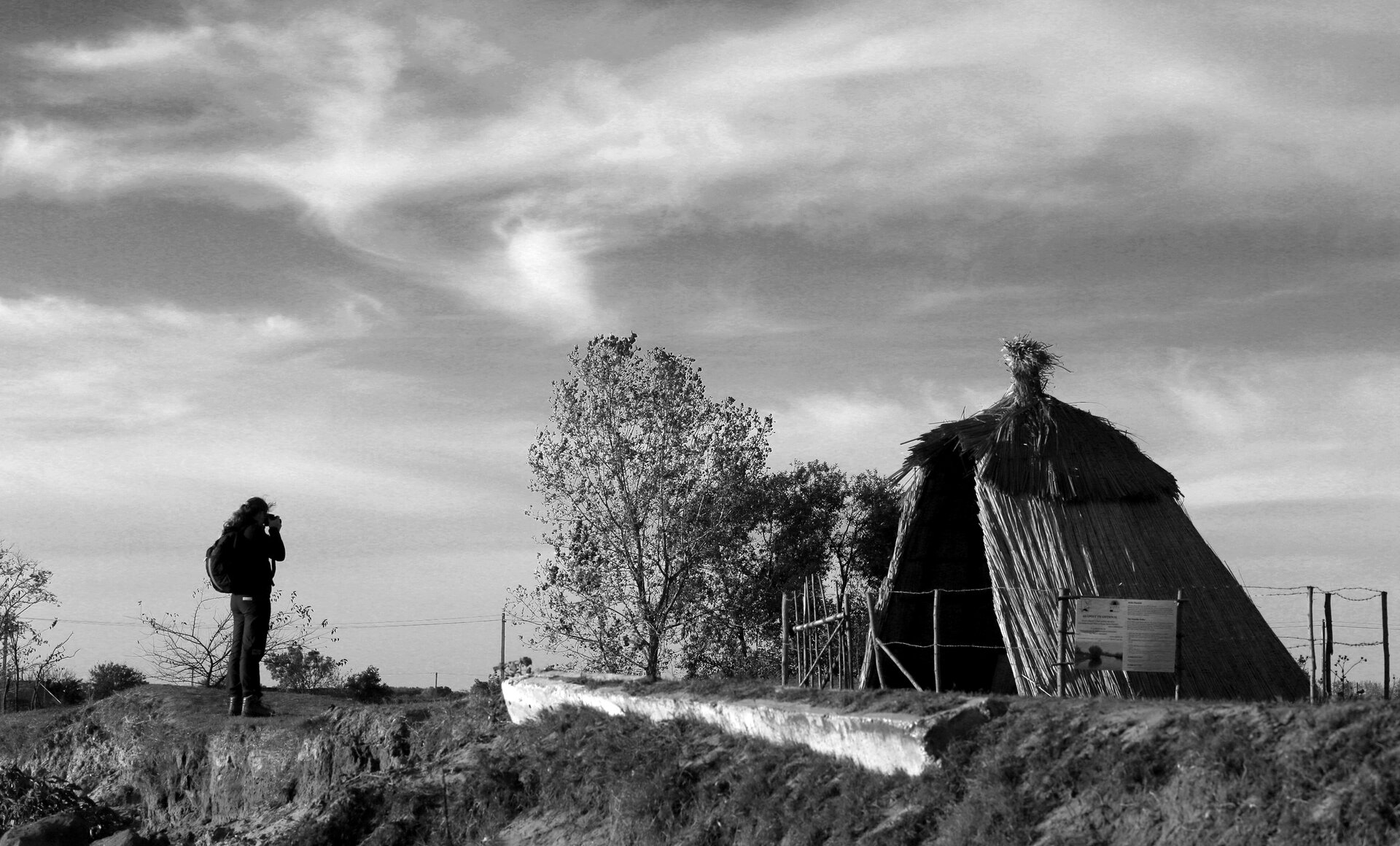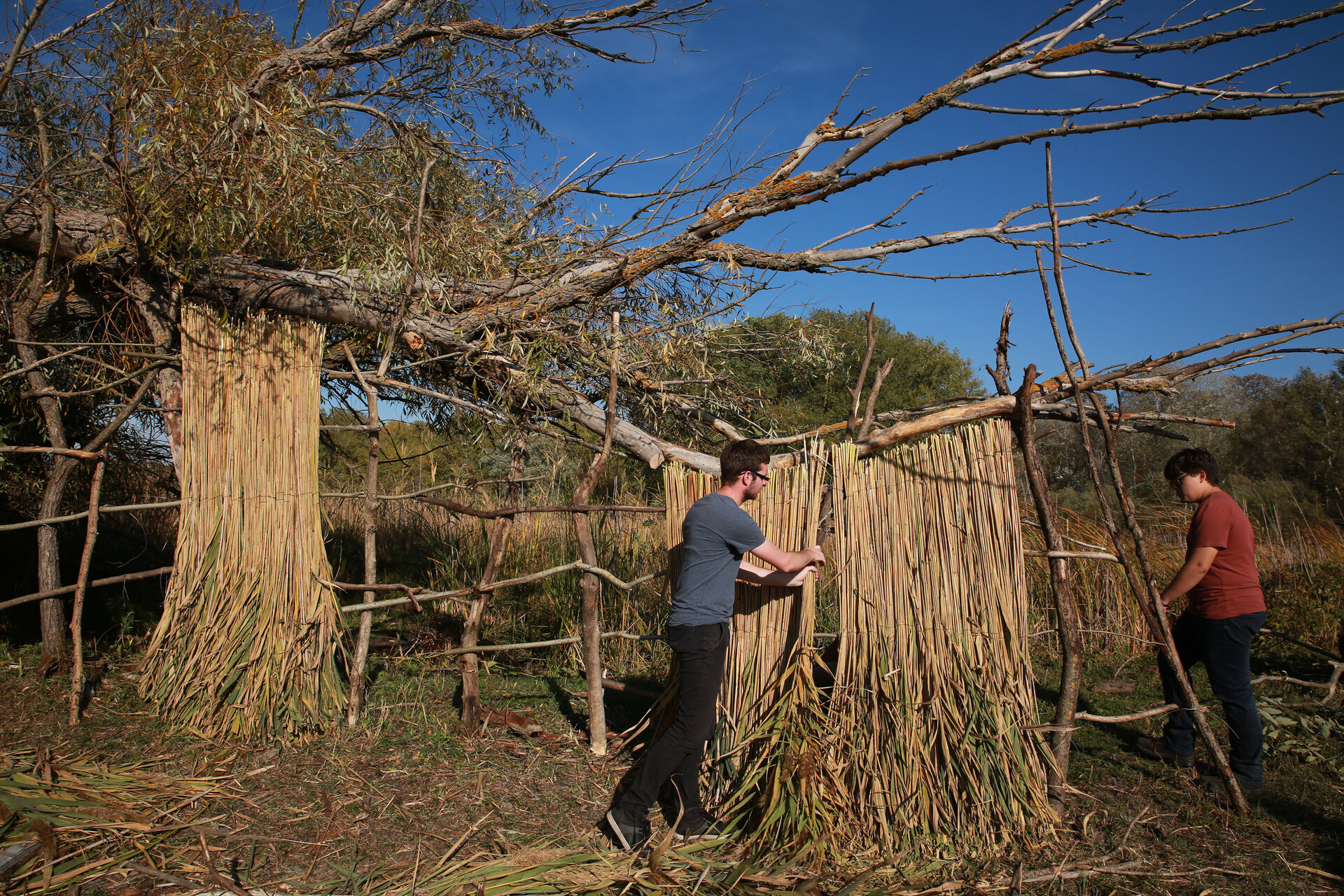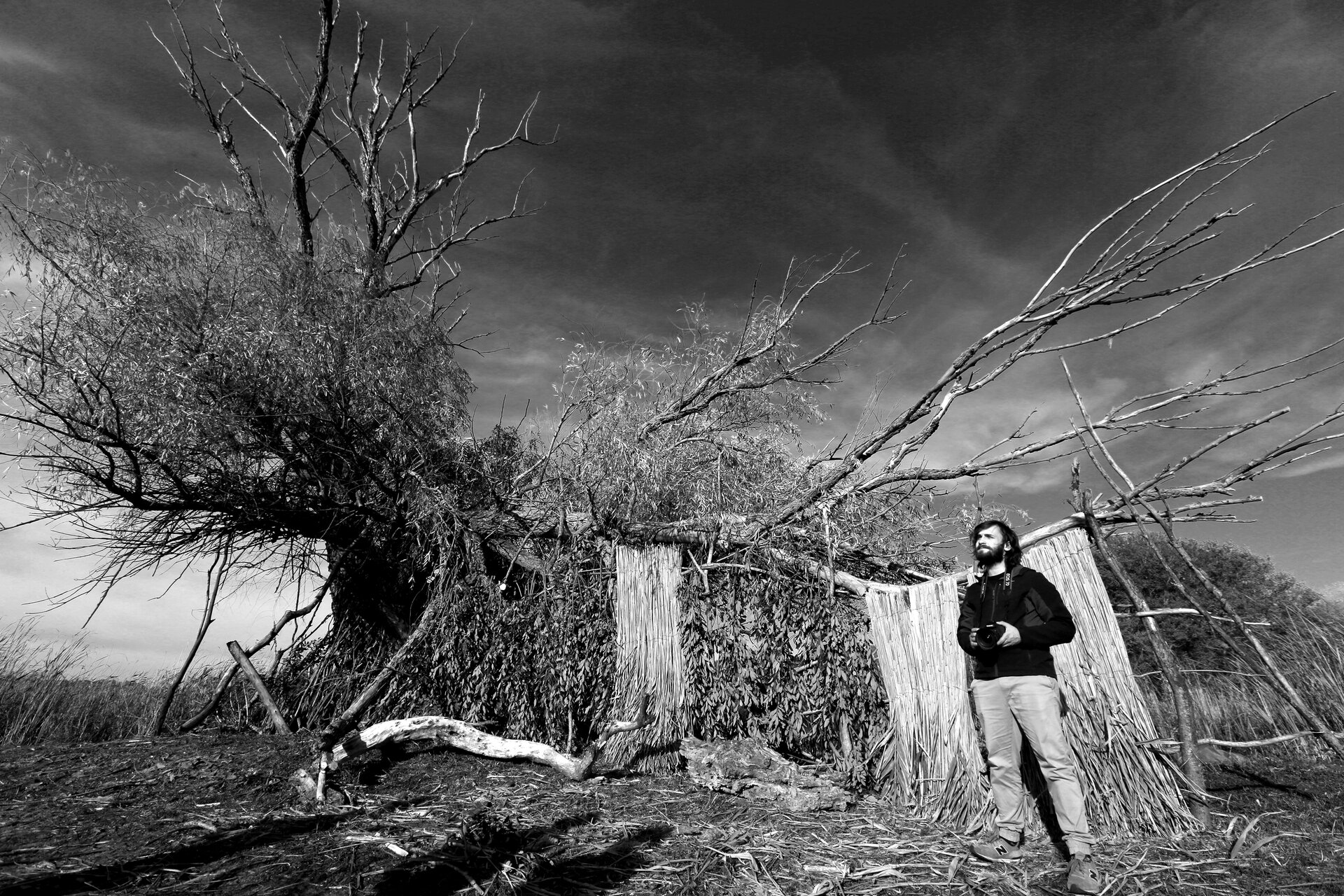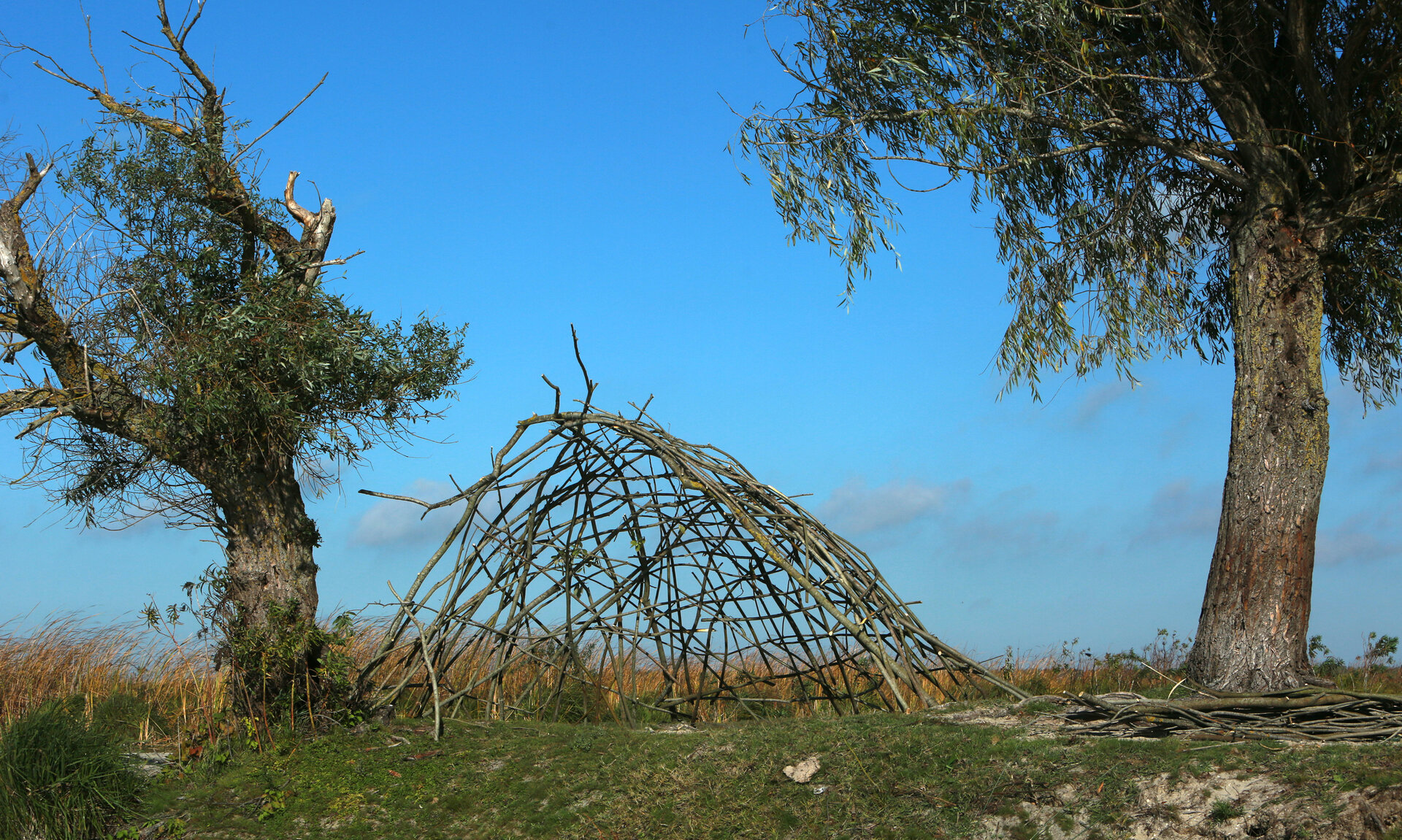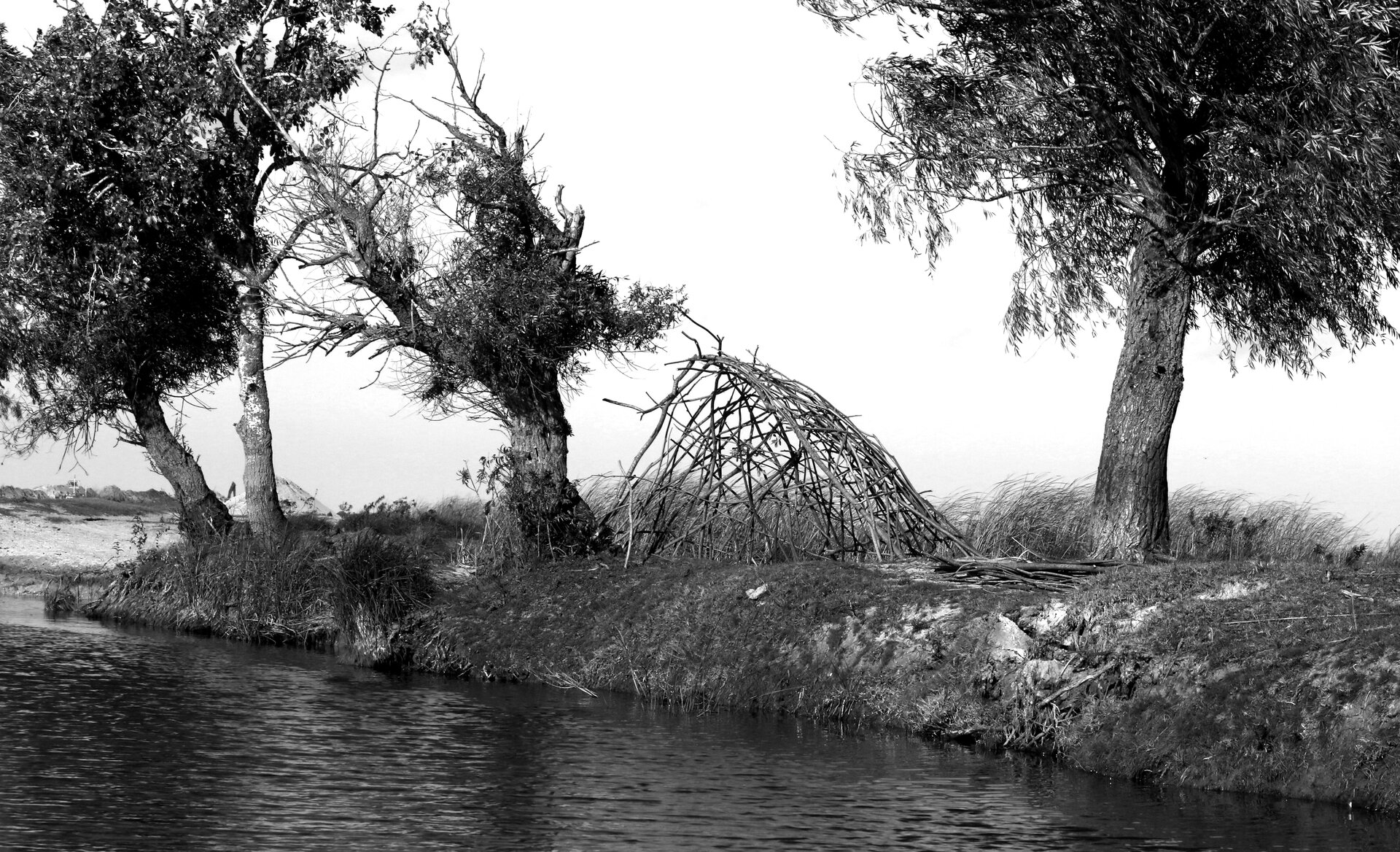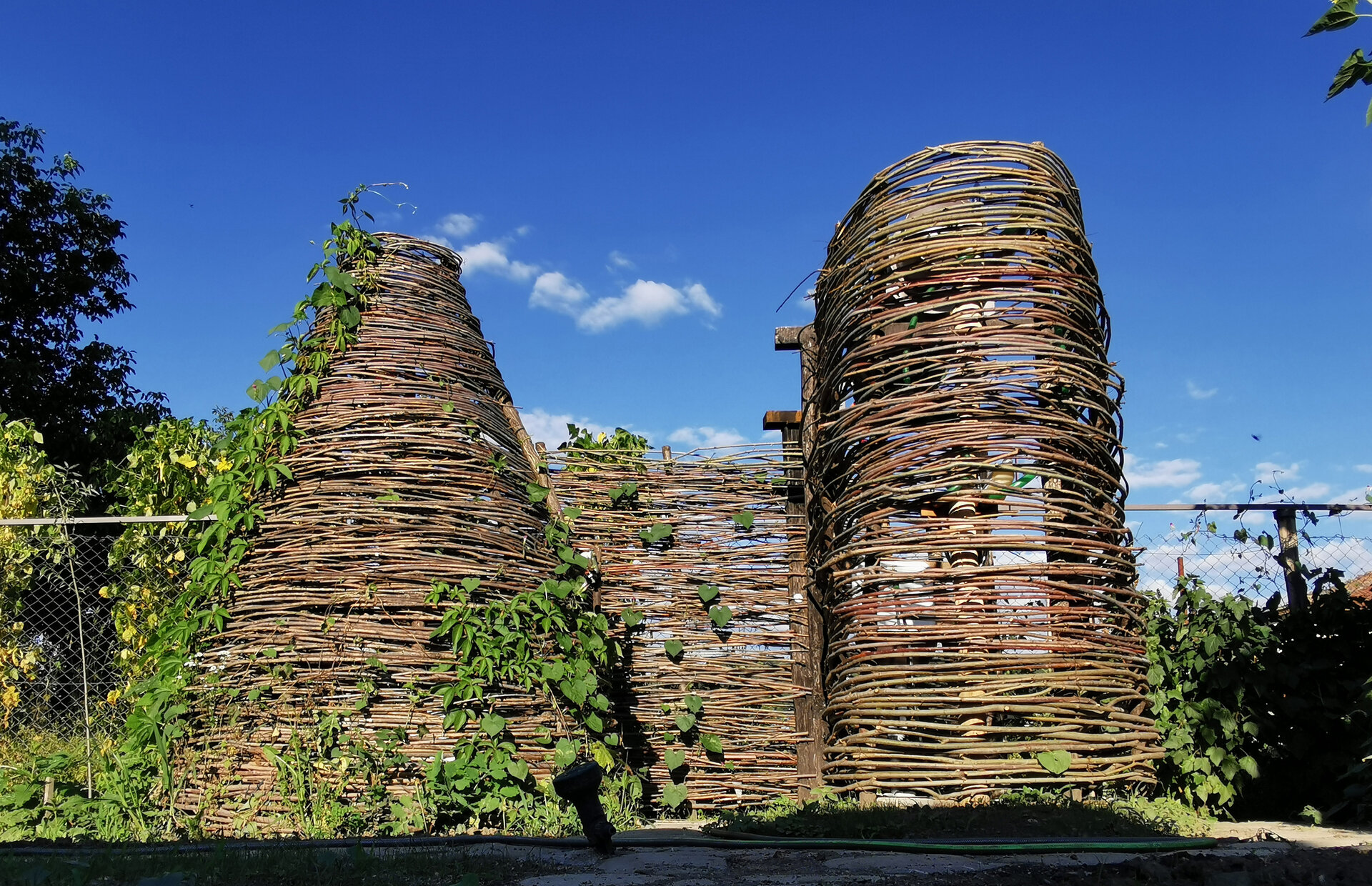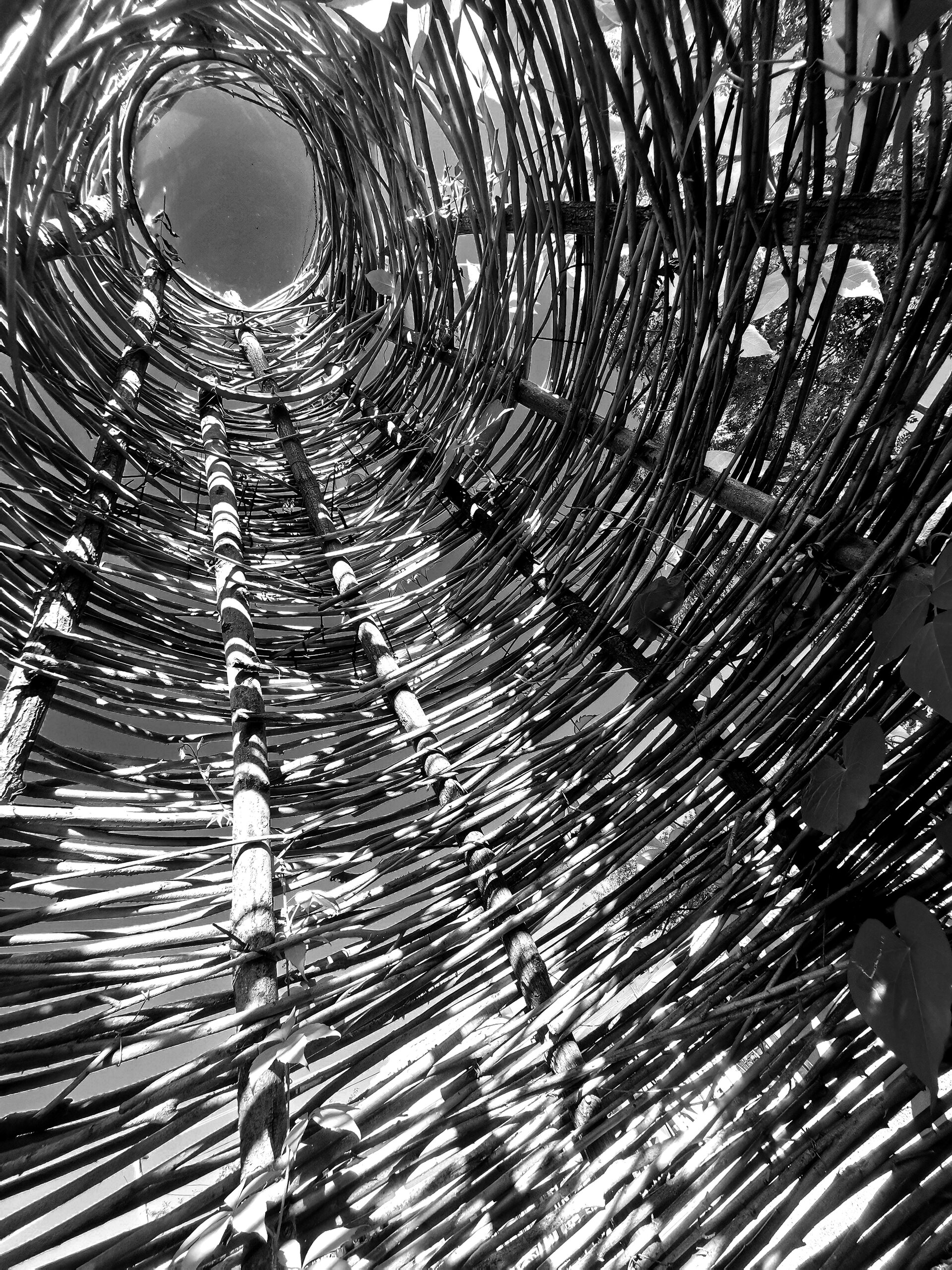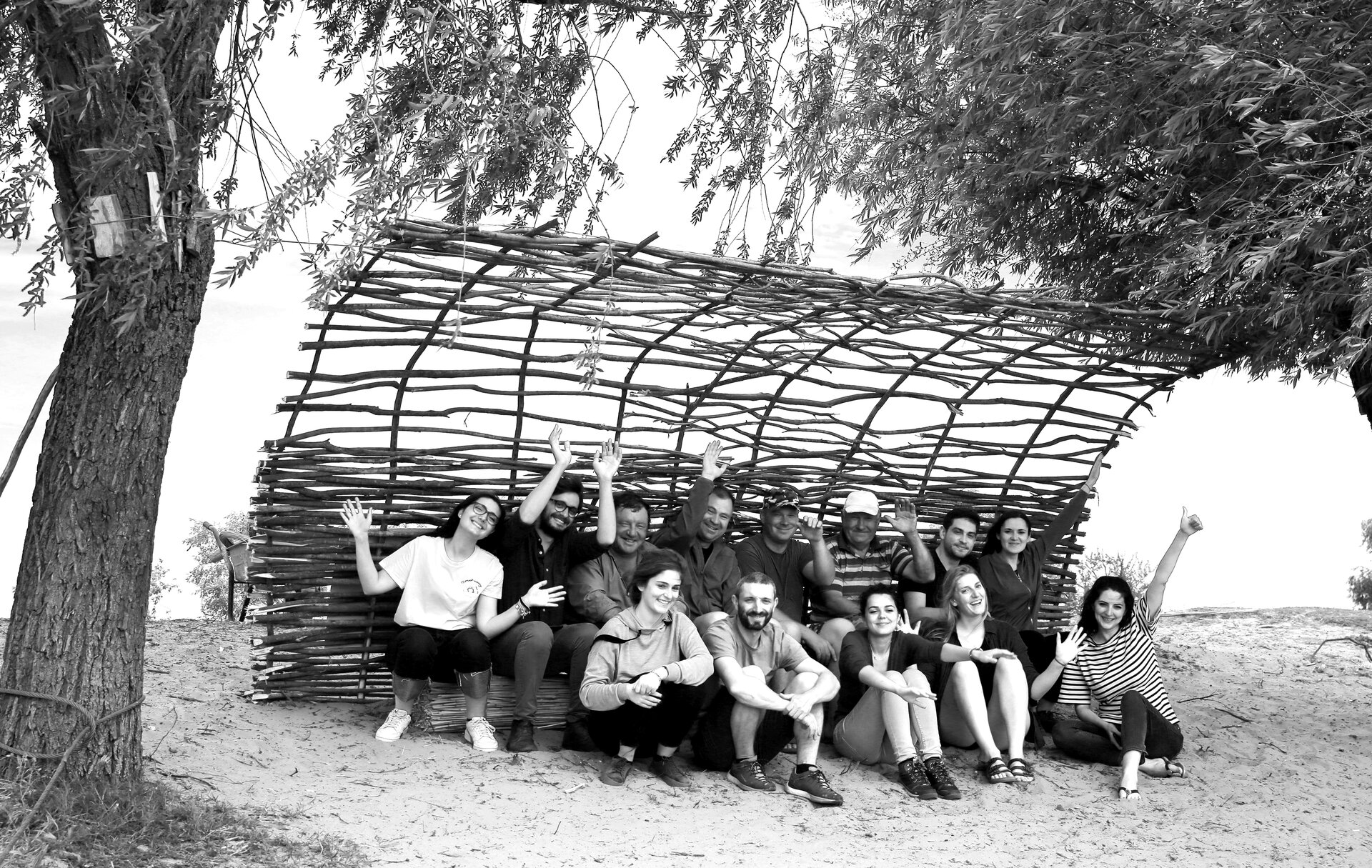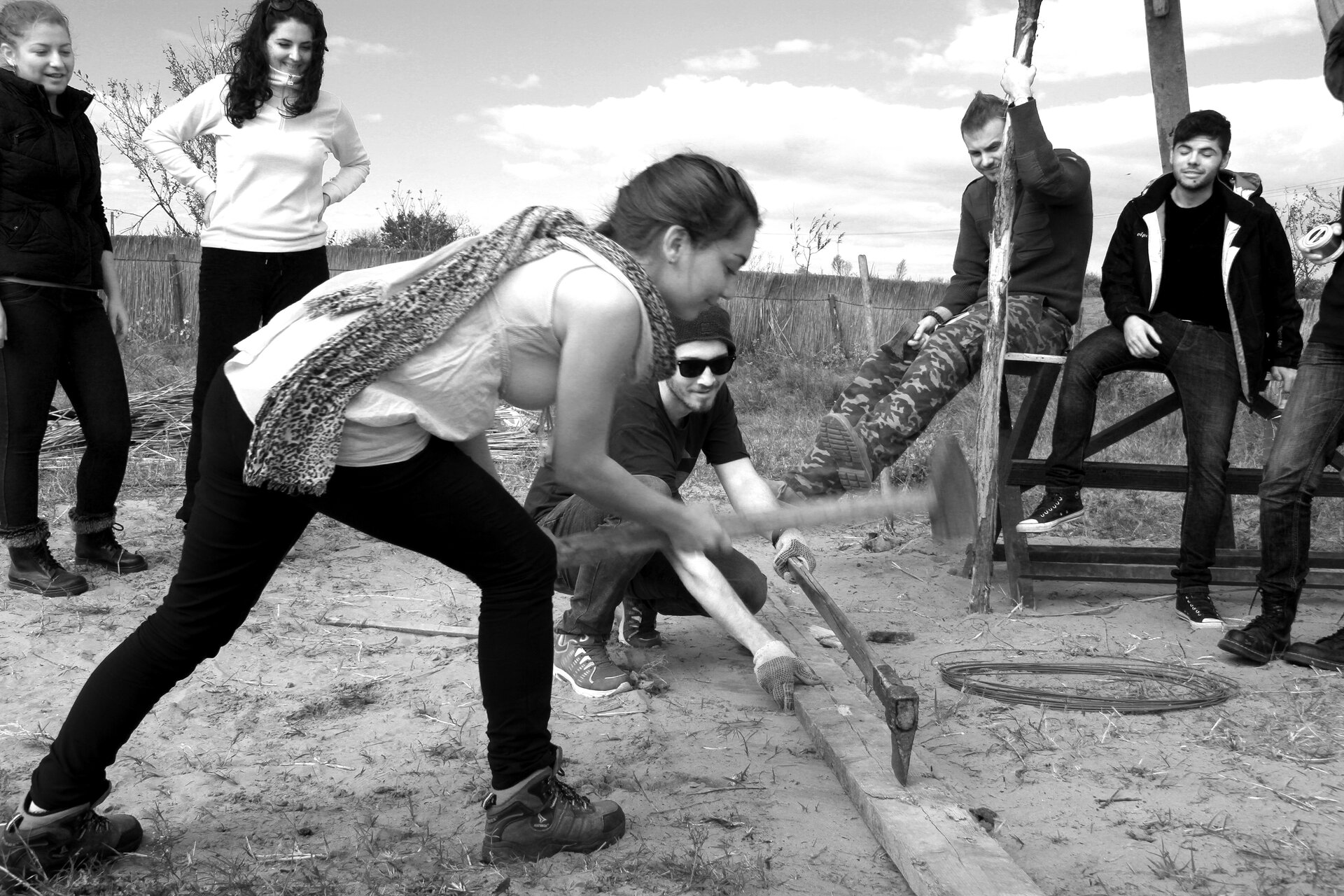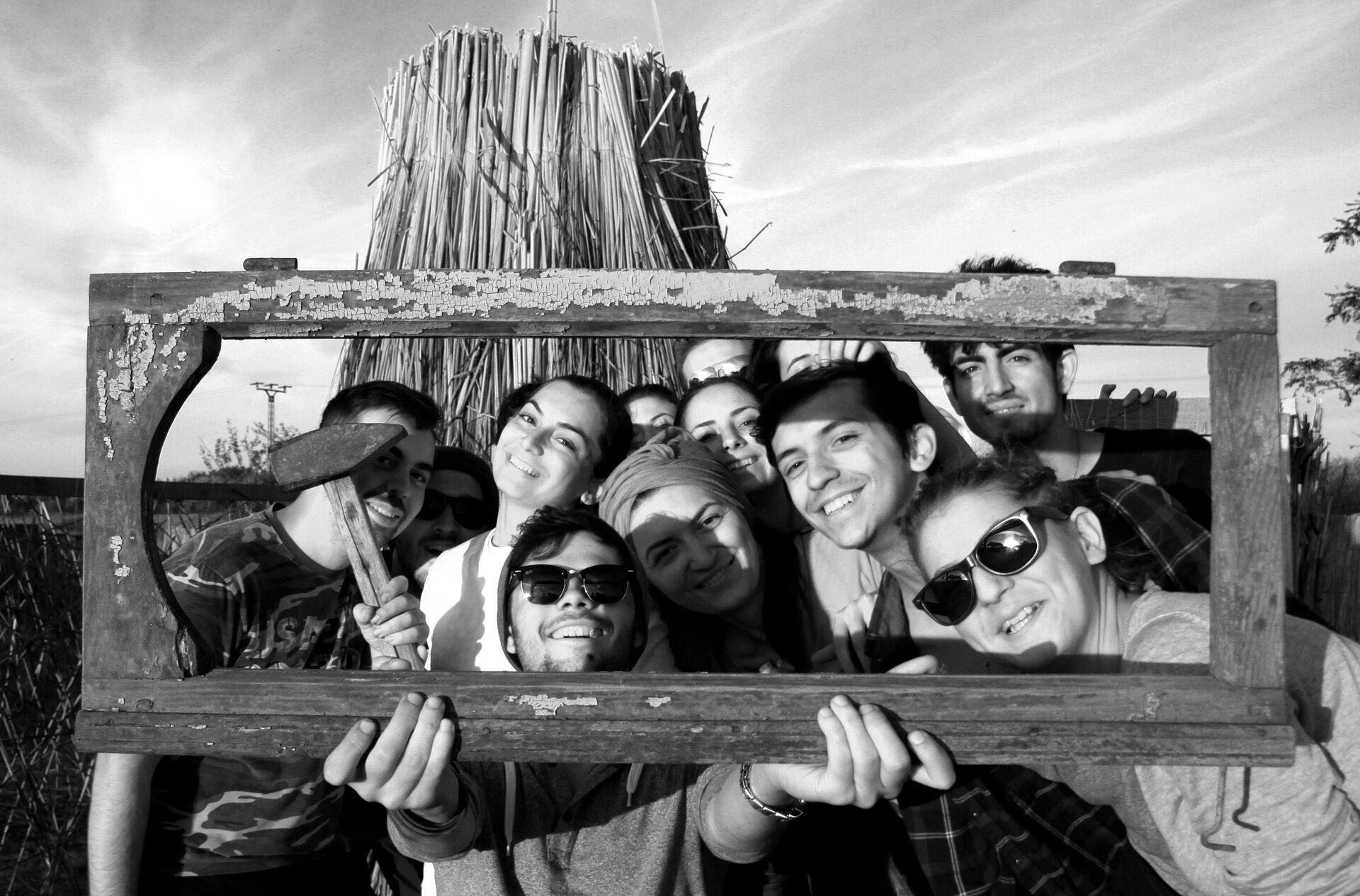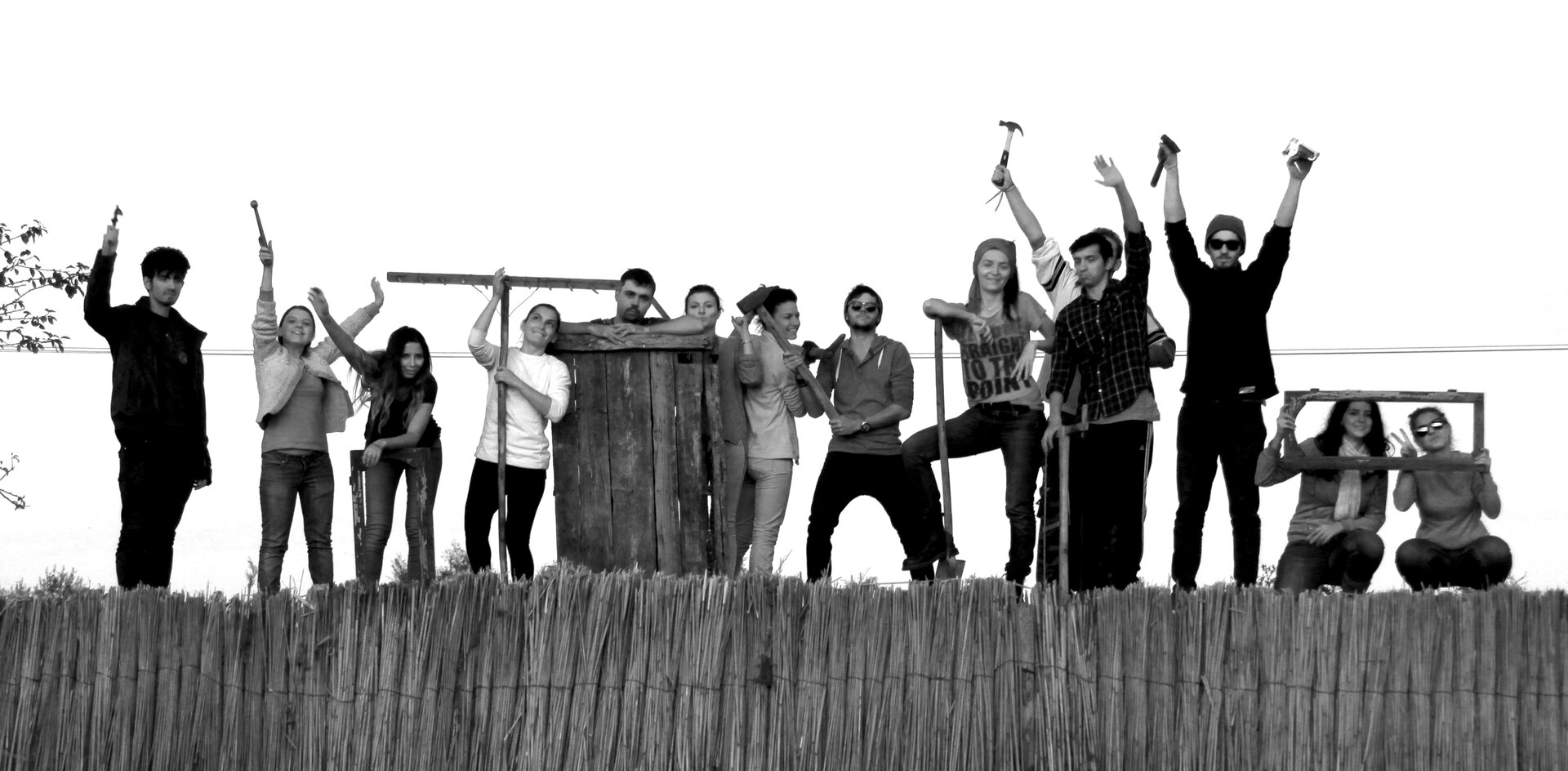
Architectural education, otherwise: To learn from building or „From one day project to one day building”
Authors’ Comment
The percourse of architectural education includes ongoing transformation processes and adaptability to contemporary society’s trends, perfecting, and reinventing.
Interdisciplinarity, architectural practice, innovation, the understanding of the space through practical exercises on models will most probably remain attributes of the learning process, regardless of the level of technological advancements and the rapid adoption of the utilization of the virtual space.
How do we comprehend tradition and the refinement of vernacular architecture? How can we compose a contemporary volume utilizing traditional materials? How do we learn to perceive the material and use it in its most natural way? How do we blend it with structure?
These are some of the questions that we have tried to answer, at the beginning of the studio, and later on in the workshop, where we focused on the realization of the proposed spaces.
The experimental architecture presented in this section represents examples of built spaces done in several coordinated workshops, in which the students will get to build together with the help of traditional craftsmen small architectural objects. The mission is passionate, as it seems to stem from the source of the primordial primitive shelters described by Vitruvius and condenses now the imagination of a shelter which gets us closer to establishing some of the answers to the aforementioned questions.
We determined that such interdisciplinary experiments have the potential to awaken creativity in students, and the capacity of experiment within the limits of the material and direct approach to the proposed space through the building process.
The displayed examples refer to 6 buildings (or real scale models) done by students under the guidance of professors and native craftsmen and traditional, local materials such as reed, locust wood, wicker branches, and willow wood.
Keywords: Experiment, Ephemeral Architecture, Building with locals, Team, Vernacular, 1:1 Model, Recyclable 100%, Vitruvius, Primordial Shelter, Reed, Thatch, Locust, Local Materials, Story of the Place, Letea, Sfistofca
Related projects:
- Uranus Now. Urban and community project
- B:MAD Bucharest Modernism Art Deco
- Govora Thermal Architecture Week
- MAZZOCCHIOO
- Inside – the Instagram housing
- Breaking Ground. The schoolyard workshops
- Kid’s Factory – Rethinking Conversation
- The Virtual Reconstruction of the Simu Museum
- InFlorești summer school
- Clips
- Architectural education, otherwise: To learn from building or „From one day project to one day building”
- UAUIM participation at „Designing the Unesco Buffer Zone – Call Internazionale di Progettazione per La Grande Villa Adriana” (Premio Piranesi 2018)
